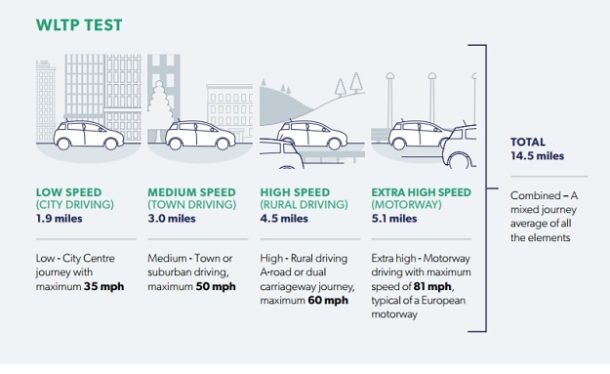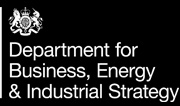
NEW WLTP & RDE ECONOMY & EMISSIONS TEST
From 1 September 2017 every new car model will be tested against the new World Harmonised Light Vehicle Test Procedure (WLTP). By September 2018 all new cars on sale will have WLTP test information. The new Real Driving Emissions (RDE) test also comes into force.
WLTP aims to give car buyers comprehensive and reliable mpg figures and help them compare and select the car best suited to the type of driving they do.
The Low Carbon Vehicle Partnership (LowCVP) has launched an information portal to give clarity and consistency about the introduction and progressive adoption of the new WLTP fuel economy test, at www.lowcvp.org.uk/initiatives/fuel-economy
Importantly, the new WLTP test will become the only truly comparable measure across every car and manufacturer which is verified by governments and certification bodies and this data should not be confused or compared with other road tests or ‘real world’ indices.
While WLTP tests are conducted in a laboratory to ensure accuracy and repeatability, they will introduce much more representative testing conditions based on data from ‘real driving’ for new cars and will provide a more accurate basis for measuring emissions and calculating a car’s fuel consumption. This will provide consumers with much more comprehensive and representative car performance data. The new test involves a significant number of key changes compared to the ‘old’ NEDC test.
The new test also places more emphasis on the detailed vehicle specification than the old test, when determining fuel consumption and CO2 emissions. The recognition of factors such as the mass and aerodynamics of the vehicle, the rolling resistance of the tyres and the impact of options fitted to the car by the manufacturer is greatly improved to give a more accurate set of values for an individual vehicle.
Most cars tested under WLTP are likely to show higher CO2 emissions and lower fuel economy figures than the same car tested under the old NEDC test. This reflects much more accurately day-to-day driving, however the actual on-road consumption is completely unaffected by the test type.
Andy Eastlake, Managing Director, Low Carbon Vehicle Partnership, comments: “The figures from the new WLTP test are designed to really help consumers understand which powertrain technology and vehicle is best suited to their driving and journey patterns. The LowCVP is working with its stakeholder community to coordinate detailed guidance and the presentation of the new data and to maximise the benefit for motorists, to further encourage the uptake of low emission vehicles.”
Manufacturers and the Government’s Vehicle Certification Agency are expected to progressively start showing WLTP car performance figures on their websites from late 2017, as new models are approved.
Cars tested under WLTP will still have NEDC CO2 and fuel consumption values reported until 2020. Manufacturers must continue to use the NEDC CO2 figure to report against European CO2 emission fleet average targets (which were set against NEDC) for new cars until the complete switch to WLTP.
From 1 September 2017 cars approved under WLTP will continue to be taxed against the NEDC CO2 emission value, so there is no change to the CO2 based taxation systems in the short term. This includes vehicle tax (VED) and company car tax (BIK). The LowCVP is working with all stakeholders to ensure a smooth transition of these regulations and policies after data becomes available for every new car.
FOR MORE INFORMATION ABOUT THE DETAILS OF THE WLTP FUEL ECONOMY TEST CLICK HERE
The Real Driving Emissions (RDE) test also comes into force today.
New models being developed for sale in the UK will need to prove their air quality credentials by passing a brand new Real Driving Emissions (RDE) test using special state-of-the-art portable emissions measurement (PEMS) equipment. This very sensitive equipment analyses the trace tailpipe emissions of pollutants, including NOX and particulates, while the car is driven in a wide range of both every-day and extreme conditions. This will ensure vehicles meet the tough Euro 6 emissions standard on the road as well as in the lab.
The new tests, which measure everything from fuel consumption and carbon dioxide (CO2), to nitrogen oxides (NOX), particulates by mass and number (PM/PN) and carbon monoxide (CO), are part of European regulations designed to improve air quality and tackle climate change. As well as a tough new laboratory test, all newly launched car models will have to undergo robust official on-road testing before they go on sale – an element that no other vehicle testing regime in the world requires.
Over the past 20 years, vehicles have advanced at a rapid rate, with high tech safety and comfort features, from electronic stability control, parking sensors and airbags, to air conditioning, heated windscreens and electric seats now increasingly fitted as standard. However, the way they are tested has not kept pace, resulting in a gap between performance in the lab and on-road where fitment of these in-car technologies can differ across models, and conditions such as speed, congestion, road surface and driving style can vary dramatically from journey to journey and driver to driver.
EU regulators and national governments have been working, with the support of industry, to address this by making testing more relevant to modern vehicles and consumer needs.
Mike Hawes, SMMT Chief Executive, said, “We welcome this challenging new regime, which will provide hard evidence that the industry’s ongoing investment in ever more advanced technology is delivering on air quality goals. Combined, these new and demanding tests will soon give consumers emissions performance information that is far closer to what they experience behind the wheel – and inspire greater confidence that the new cars they buy are not only the cleanest, but the most fuel efficient ever produced.”
The WLTP and RDE tests replace the previous and long-outdated laboratory test known as the New European Driving Cycle (NEDC), which was designed back in the 1980s and last updated in 1997. Revolutionary in its day, NEDC was intended to provide consistent benchmarking information for buyers across Europe as well as determining whether cars meet minimum air quality standards and providing the basis for the UK’s CO2-based Vehicle Excise Duty system.
Newly designed cars will start to be tested under the new regime over the coming months after the final piece of legislation specifying the requirements that allow testing authorities and manufacturers to prepare was published in July this year. This means consumers could start to see these brand new models arrive in showrooms from as early as next year. By 1 September 2018, all new cars on sale will have undergone WLTP testing and by 1 September 2019, all will have undergone the full RDE testing for both NOx and PN.
The Real Driving Emissions (RDE) test will ensure the vehicle’s lab test performance is matched on the road. RDE works by fitting equipment called a Portable Emissions Measurement System (PEMS) to the vehicle, which measures emissions while the vehicle is driven on the road.
Given the huge differences in temperature, road and vehicle conditions as well as driving styles, no lab test can ever replicate exactly what happens on the road. RDE testing will demonstrate that new cars’ low emissions are achieved in these real world conditions.
RDE will also include some extreme driving conditions, rarely encountered by most motorists, for example carrying a heavy load up a steep hill at high speed in very low temperatures.
To allow for the margins of error in highly sensitive PEMS equipment and the test itself, there is a tolerance allowed on top of the laboratory limits – known as the conformity factor.
If the vehicle meets these requirements, as independently witnessed by a government-appointed independent approval agency, it will be approved for sale in Europe.
Find out more at the LowCVP WLTP Portal: http://www.lowcvp.org.uk/initiatives/fuel-economy/wltp.htm





